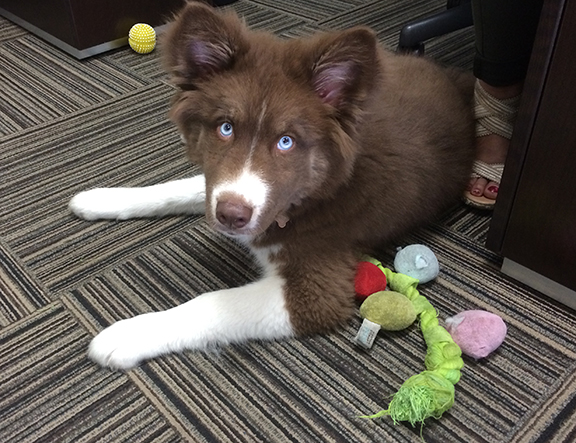What is a “mouthy” dog?
When a dog is described as mouthy, it usually means they put their teeth on skin without breaking it, although scratches or small nicks can happen when the dog is especially excited. In a litter, the mother teaches bite control early, but people can accidentally undo that training by encouraging rough play. Bouncing your hand around for a puppy to chase might seem cute at eight weeks old, but it becomes a problem when a fifty-pound adolescent jumps up and grabs your hand with their teeth. A dog that is too mouthy can also make it difficult to use treats during training. If your dog nips so much that you cannot reward them, you need to address that behavior first.
Solution #1: Hands Are Not Toys
Prevention is easier than fixing a problem. Teach your dog that hands are only for petting, feeding, and holding toys. Tug can be a good outlet for dogs who like to use their mouths, as long as they can stay calm. If your dog gets too excited and jumps to grab the toy when it is taken away, they need to learn impulse control. Always use cues like “take it” and “drop it,” and reward with a treat when they release the toy.
Solution #2: Replace Teeth with Kisses
If your dog is already putting teeth on you, teach a different behavior. Dogs cannot lick and bite at the same time. Put a treat in your hand and close your fist. If your dog licks, open your hand and reward. If they use their teeth, pull your hand away and try again. Repeat this until your dog learns that gentle mouths lead to good things.
Solution #3: Be a Tree
When your dog uses their teeth, all play and attention should stop. Fold your arms, tuck your hands into your body, stand still, and look away. Do not talk or react. Even saying “no” can count as attention and might encourage the behavior. Wait calmly. When your dog gives up and either sits or walks away, calmly offer your hand or a treat to restart gentle interaction. Everyone in the household must follow this rule. If even one person allows biting during play, the dog will not learn.
Solution #4: Find a trainer to help.
If mouthiness continues or gets worse, schedule a private lesson with a trainer. Group classes have too many distractions at this stage. One-on-one help will show you how to redirect your dog to better behaviors and give you a foundation for success. Once you understand the basics, you can continue the work at home.
We all hope our dogs will be gentle companions, but that is not always what we get. Whether it is a rescue with baggage or a puppy that learned rough habits, the stress of dealing with a mouthy dog can take a toll on your home. The sooner you address it, the easier it will be to change.
Our Family Package can help you address and correct mouthy behavior, providing guidance and training strategies to create a calm, well-mannered dog for your household.

